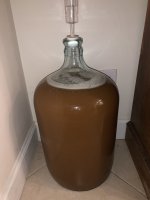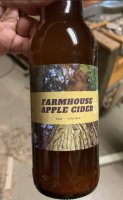Fern0022
Active Member
- Joined
- Aug 27, 2021
- Messages
- 25
- Reaction score
- 2
I was going to start yet another batch of cider today, but couldn’t find the motivation. Every cider I make turns out overly tart. The apple (and other fruits) flavors are there, but theyare hidden under this tart (almost berliner weisse) flavor. I’ve tried sweetening & mixing with apple juice in the glass before serving, but the sourness always lingers.
I follow as many of the rules which I’ve learned in here over the past few months. All of my recipes have included store bought juice (without preservatives), yeast (red star, mangrove jack M02, or Lavin K1V-1116), yeast nutrient, and pectic enzyme. I maintain constant temp (~74*f), practice good sanitization, only rack with a siphon, keep them in the dark, backsweeten with apple juice concentrate (also without preservatives) to bottle carb, bottle (with caps) in dark bottles, and cold crash them when they are ready using the coke bottle technique.
My fermentations are always healthy and the end product tastes a bit different than the others, which is to be expected. But the sourness is a constant. After brewing nearly 50 gallons, I’ve reached my breaking point.
What am I doing wrong?????
I follow as many of the rules which I’ve learned in here over the past few months. All of my recipes have included store bought juice (without preservatives), yeast (red star, mangrove jack M02, or Lavin K1V-1116), yeast nutrient, and pectic enzyme. I maintain constant temp (~74*f), practice good sanitization, only rack with a siphon, keep them in the dark, backsweeten with apple juice concentrate (also without preservatives) to bottle carb, bottle (with caps) in dark bottles, and cold crash them when they are ready using the coke bottle technique.
My fermentations are always healthy and the end product tastes a bit different than the others, which is to be expected. But the sourness is a constant. After brewing nearly 50 gallons, I’ve reached my breaking point.
What am I doing wrong?????














































![Craft A Brew - Safale BE-256 Yeast - Fermentis - Belgian Ale Dry Yeast - For Belgian & Strong Ales - Ingredients for Home Brewing - Beer Making Supplies - [3 Pack]](https://m.media-amazon.com/images/I/51bcKEwQmWL._SL500_.jpg)













